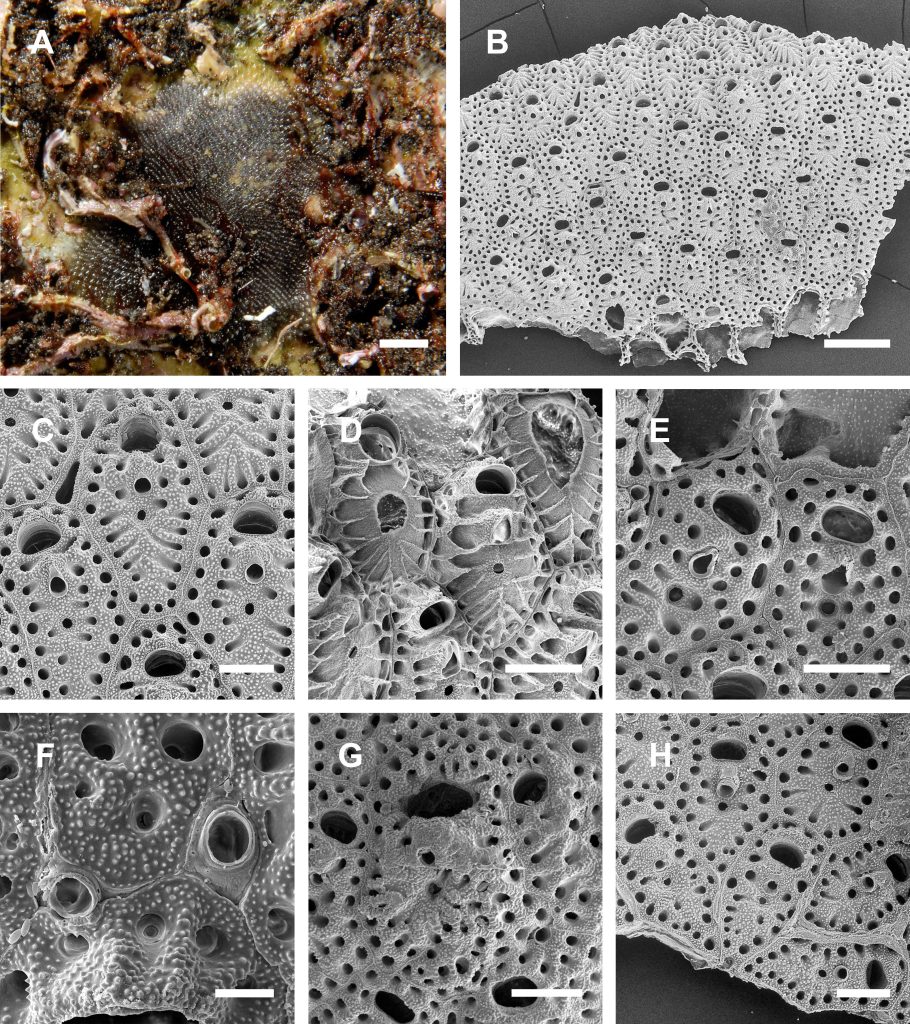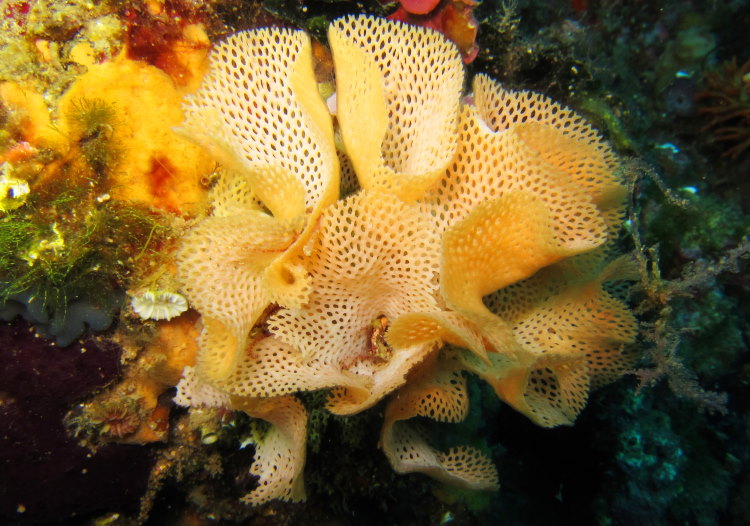Here at our blog, we will keep writing posts about our current projects, but we’ll also start a new blog series; group of the month. To kick start the new year and the new series, I will present the first group: Bryozoa.
As you might have understood by now, members in our group are working on many different invertebrate taxa; Torsten on annelids, Vlademir on beetles and Alberto on many taxa of the larger grouping Lophotrochozoa. A phylum within the larger clade of Lophotrochozoa, is Bryozoa. Prior to my Phd on beetles, I worked with this phylum, and I wrote my MSc-thesis about them. As such, I will present to you some information and facts about this phylum.
Phylum Bryozoa
Bryozoa, also known as the Polyzoa, Ectoprocta or commonly as moss animals, is a phylum of aquatic, colonial invertebrates predominantly found in marine environments. They are suspension feeders, filtering the water using their lophophore. The majority of bryozoan species have calcified skeletons, which are generally well-preserved, hence yielding a rich fossil record that dates back to the early Tremadocian (about 485–478 mya) (Ma, Taylor, Xia, & Zhan, 2015). Extant bryozoans are divided into three different classes: Phylactolaemata, Stenolaemata and Gymnolaemata, and about 6600 described species are found worldwide, with about 80 percent of all species found in the gymnolaemate order Cheilostomata (P. Bock, pers. comm., 2018).
The colonies are made out of individual functional units called “zooids” and within a colony, each individual zooid can have unique and different tasks. Among them we find “autozooids”, which are responsible for feeding, excretion, and supplying nutrients to the colony through diverse channels. Others zooids are specialized brooding chambers for fertilized eggs and some are zooids made for colonial defense. The photo below show how one would take SEM photos of a colony for description. The different zooids, with different form and function, are photographed and described in detail. See the figure text for the full technical descriptions.

Figure 5. Reptadeonella santamariae sp. nov.,
a–F, H: paratype, Faial, azores (SMF 60074), G: holotype, Santa Maria, azores (DBua-Bry 001).
(a) optical image of the paratype colony right after retrieval of the settlement panel
which it encrusts, note the grey to black colour; (B) overview of colony fragment;
(C) close-up of autozooids showing orifices, presumably non-functional avicularia as present in by far most
zooids, and spiramina; (D) early ontogenetic autozooids at the colony margin showing different stages
of frontal shield, avicularium and orifice formation; (e) two fully formed zooids near the colony margin,
the left one with a somewhat malformed avicularium; (F) interzooidal kenozooids produced in junctions
between fully formed zooids; (G) gonozooid, note the presence of an interzooidal kenozooid at the junction
of the gonozooid and the two autozooids to the right; (H) three of the six zooids of the ancestrular complex.
Scale bars: a = 0.25 cm; B = 500 μm; C, H = 150 μm; D, e, G = 200 μm; F = 50 μm.
The colonies have a variety of different shapes and forms, ranging from flat encrusting ones, to large fan-like erect colonies. The majority are sessile, but there is actually some free-living representatives. Bryozoans of the family Cupuladriidae are probably the best-studied free-living representatives, and they do actually move on the substrate with the help of their movable mandibles (setae).

Phylogentic relationships
The phylogenetic relationships, both among bryozoan taxa and between other higher taxa, are subject to many questions and uncertainties, as the majority of phylogenetic and/or systematic studies are based largely or solely on morphological characters. In my MSc-thesis, my goal was to disentangle the relationships within one particular family, Adeonidae, based on molecular data. Our colleagues at NHM Oslo in the Bleed lab (now called EPA), led by Lee Hisang Liow have for some time worked on this, and are constantly increasing the number of sequences specimens hoping to create new and more robust molecular phylogenies. Still rising in numbers, more research within this field is definitely necessary.
Interesting facts:
- Many species are simultaneously hermaphrodites, with both male and female zooids.
- They reproduce both sexually and asexually: either with internal brooding or asexual budding. In the case of sexual reproduction, fertilization can be done both externally or internally.
- From the species Bugula neritina, chemicals called bryostatins can be extracted, and these are used in medical research for treatment of cancer and Alzheimer’s disease.
- They have multiple defense strategies, including spines and the release of chemical compounds.
- Bryozoans are in some areas important reef builders, creating habitats for other animals.
This youtube-link also provide some quick and fun facts about bryozoans:
References and further reading:
- Ma, J., Taylor, P. D., Xia, F.-S., & Zhan, R. (2015). The oldest known bryozoan: Prophyllodictya (Cryptostomata) from the lower Tremadocian (Lower Ordovician) of Liujiachang, south-western Hubei, central China. Palaeontology, 58, 925-934.
- Haugen, M. N., Novosel, M., Wisshak, M., & Berning, B. (2019). The genus Reptadeonella (Bryozoa, Cheilostomatida) in European waters: There’s more in it than meets the eye. Bryozoan Studies, 59-68.
- Orr, Russell; Haugen, Marianne Nilsen; Berning, Björn; Bock, Phil; Cumming, Robyn L. & Florence, Wayne (…) (2019). A genome-skimmed phylogeny of a widespread bryozoan family, Adeonidae. BMC Evolutionary Biology. ISSN 1471-2148. 19(235). doi: 10.1186/s12862-019-1563-4.
- Waeschenbach, A., Taylor, P. D., & Littlewood, D. T. J. (2012). A molecular phylogeny of bryozoans. Molecular Phylogenetics and Evolution, 62, 718-735.
![]()




